Arabic is an essential language for the people who mainly live in the Gulf countries and the Middle East. Arabic is the national and official language of 22 countries around the world. For understanding basic things; one needs to be familiar with the Arabic alphabet.
Arabic is said to be a universal language because foreign words from many languages are present in modern standard Arabic now. Let’s take a closer look.
Arabic Text
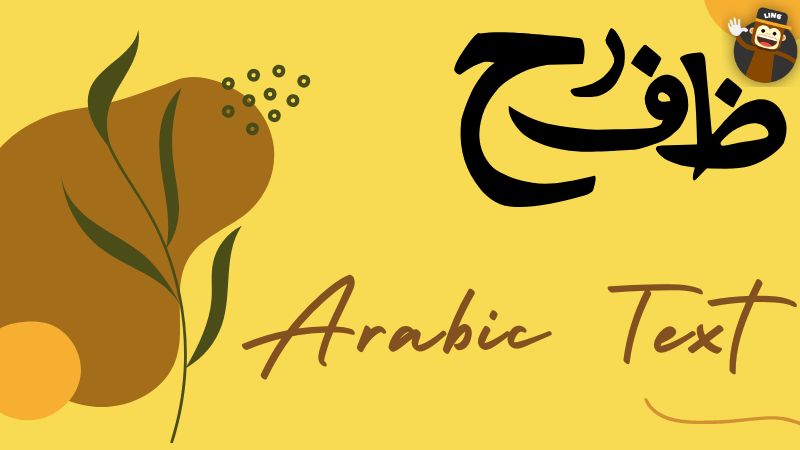
The Arabic language is written in its own script. Urdu and Farsi are also written in this script. It is one of the oldest and most complex scripts. Since it is one of the significant Semitic languages, it starts from the right side and proceeds to the left. Unlike English, it neither has any uppercase letters nor any lowercase letters.
In Arabic, most letters have four types of shapes called connectors.
- Independent: no connection with any other letter [e.g., ب]
- Initial: a letter connected to a letter that comes right after it. [e.g., بـ]
- Medial: a letter connected to a letter that comes both before and after. [e.g., ـبـ]
- Final: a final letter form is the one in which the final letter is connected to the letter before it. [e.g., ـب]
Arabic is a language in which a word will have a completely different meaning if it has just one other dot. Apart from these connectors, there are six non-connectors in Arabic alphabets. The non-connectors have only two shapes.
- Independent: no connection with any other letter [e.g., ا ]
- Final: connected to the letter before it only. [e.g., ـا]
It is imperative to have proper knowledge of using the correct connector shapes for writing Arabic.
Overview Of The Arabic Alphabet
There are precisely 28 basic letters in the Arabic alphabet. All these letters are consonants. Similarly, shaped letters of the Arabic alphabet are grouped in the same family of two and three letters.
The fundamental difference between alphabet letters of the same family is the placement of a dot or a unique character. For example, if the dot is placed on top of the letter, and if the dot is placed beneath the letter, both pronunciations of the letters will be different.
The 29th Letter Of The Arabic Alphabet
Apart from all the basic letters, another is considered the 29th letter of the Arabic language.
When the two letters, letter (ل) and letter( ا), are joined, they create a new letter (لا). Some consider it a unique character. In some areas, it is considered to be the 29th letter. It all varies from place to place.
Writing Style Of The Arabic Alphabet
Arabic writing is done in cursive style handwriting and a horizontal line.
Types Of Arabic writing
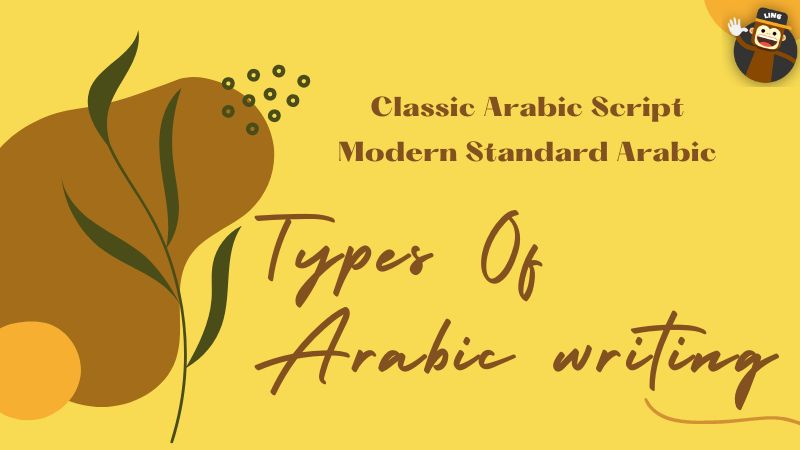
The birth of the Arabic language was more than a thousand years ago. It is believed that the custom of writing the Arabic alphabet started in the 4th century A.D. However, the oldest written Arabic writing and transcripts date back to the second decade of the fifth century A.D. This was done to make the Quran easier to read. The use of two dots, short vowel sound, and classical Arabic was used in this writing.
Now, there are two main types of Arabic writings.
Classic Arabic Script
You might have noticed that the literature in every language is complicated. The classic Arabic script is also a bit difficult to understand. If you’re reading an old book, it will require translations into modern Arabic.
Modern Standard Arabic
Modern Arabic or Modern Standard Arabic (M.S.A.) is the Arabic spoken at this time—also written today. It is a universal standard form of Arabic. Literary Arabic is different than modern Arabic. Although there are minimal differences in modern Arabic, that is just because of changes in the region. Modern Arabic writing systems and scripts evolved from time to time, and minor differences started coming in written Arabic.
Vowels Of The Arabic Alphabet
The Arabic alphabet consists of 6 vowels. Arabic vowels can easily be understood by comparing them with English vowels.
In both languages, there is a fifty percent similarity in the concept of vowels. However, the Arabic vowels do not connect easily with other letters. Also, they disrupt the flow of the word in which they are used. Arabic vowels are further divided into two parts.
Long Vowels
The long vowels in the Arabic language are pronounced longer than any other letter in that specific place.
These long vowels can also be taken as consonants. It all depends on their placement within the word. The long vowels in the Arabic alphabet are:
- Alif (ا), which is said to be like the letter (a) in English.
- Yeh (ی) is an Arabic long vowel that is said to be like the letter (i) in English.
- Wau (و), which is said to be like the letter (u) in English.
The following example explains long vowels:
The Arabic word “bab(باب)” is pronounced as “baab.” It consists of two Arabic letters, “ب” and “ا.” A single Arabic long vowel (ا) Alif sounds very long. And if you notice, Alif is connected with the first Arabic consonant letter but not the second.
Short Vowels
Both the Arabic vowel types, long and short, are followed by a consonant. Many words, especially short vowel sounds, are tough to pronounce for a nonnative Arabic speaker.
In the Arabic language, short vowels are used either above the consonant or below the consonant. Because it changes the pronunciation of the whole word. There are three short vowels in the Arabic alphabet. They are called Fatha, Kasra & Damma.
The following example explains better:
When we pronounce the Arabic word (فقط), it is made by combining three letters. Our tongue will remain neutral, and our lips will remain open. This is a centralized quality of the short vowel fatha.
Spacing Of Arabic Letters
Arabic is a very flexible language when it comes to writing. One can write it as they want to as long as it is cursive style handwriting. Make the letters long or short according to one’s preference.
This is an unspoken rule: if there is space and one has finished the sentence, one can elongate the last letter to the extent that it fills all the space left in that line.
The writing and speaking styles change from region to region and country to country.
Colloquial Arabic
There are more than 30 different kinds of Arabic spoken and written differently. This is because Arabic is spoken very widely, and people write it as they speak, so a change in words and pronunciation leads to changes in their writing patterns. It is written in a cursive style; basic Arabic doesn’t change but what does change is the way it is written around the world.
Egyptian, Algerian, Moroccan, Sudanese, Saudi, North Levantine, Mesopotamian, and Najdi are some famous Arabic dialects. The modern standard Arabic contains foreign words from all of these languages.
The letter hamza (ء)
The letter hamza (ء) is unique, but also one of the most essential characters in Arabic writing. It is a letter that represents a stop. Its sound is produced by jerking the vocal cords.
It often replaces the letter “t” in English. It can be seen in the English word football The letter “t” is omitted, and hamza is pronounced in its place.
In basic Arabic word writing, hamza is written like a small c with a line joined to the lower end of this c.
Hamza (ء) always comes alone. It is never connected with any word. So the preceding word will take its initial or its final shape. But hamza (ء) will remain in the same form.
Taa Marbutat (ة)
The taa marbutat is a letter that will always appear at the end of a sentence. And it is always preceded by (ا) (و) (ی) or all the vowels of Arabic alphabets.
The letter taa marbutat is just like the letter he (ہ). The only addition is the two dots placed right on top of it.
According to the rules of Modern Standard Arabic, taa marbutat is often used or spoken as a short “a” (fatha). But sometimes it is also used as a long “a” (Alif). This letter is used for feminine things mainly.
The taa marbutat only has two shapes. If the preceding letter is a connector, it will be written in its final position, “ـة.” But if its preceding letter is a non-connector, it will be written in its independent form, “ة.”
However, the case becomes different when it comes to classical Arabic or the Arabic script of the Quran. The taa marbutat is then pronounced as a soft (ہ).
Series And Squads In The Arabic Alphabet
Now we will look at a list of the series and squads found in the Arabic alphabet. Every series, family, and squad has to be incorporated with the letter Alif (الف)
Alif (الف)

Alif is the first of all letters in the Arabic language. Alif is typically pronounced just like the English letter “A.”
Normally “Alif” is written with a “hamza” on the top of it (أَ), but when “Alif” is to be used as a vowel, the hamza (ء) on it is removed as only simple Alif (ا) is written.
It is the letter one in Arabic, and it seems to be almost like a 1.
The Arabic letter Alif has two forms only: the isolated form and the final position or the final form. The isolated form is the same basic shape, “ا.” And the final form of Alif is “ـا.”
The Ba (ب) Series

Ba (ب) is the second letter or second Arabic alphabet. The pronunciation of Ba is the same as that of B in English.
The Ba (ب) is a straight line with curved edges. The Ba can be written in all isolated, initial, medial, and final forms.
In isolated form, Ba is written like this (ب). In initial form, Ba is written as (بـ). In medial form like this (ـبـ). And in the final form, Ba is written this way (ـب).
The Ta (ت) and Tha (ث) also belong to the same series. And have precisely similar forms, just with the number of dots and placement difference. The Ta (ت) has two dots above it, and the Tha (ث) has three dots on it.
The Jeem (ج) Series
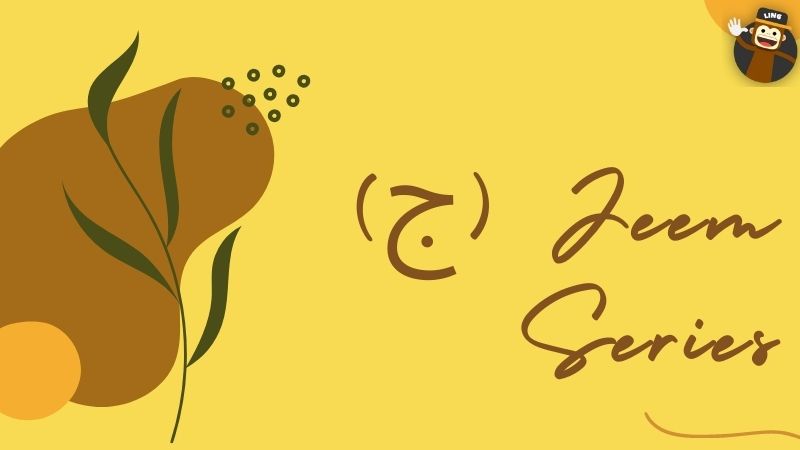
Jeem (ج) is the fifth letter of the Arabic alphabet. The pronunciation of Jeem (ج) is the same as that of “J” in English.
Jeem is a consonant, so it can also be written in all forms.
- In isolated form, Jeem (ج) is written like this (ج).
- In initial form, Jeem (ج) is written as (جـ).
- In medial form, Jeem (ج) is like this ( ـجـ).
- And in the final form, Jeem (ج) is written this way (ـج).
The Arabic letters “he (ح)” and “khe (خ)” also belong to the same series with minor differences in dot placement. The letter ح has no dot in or on it. And the خ has just a letter on the top of it.
The Daal (د) Series
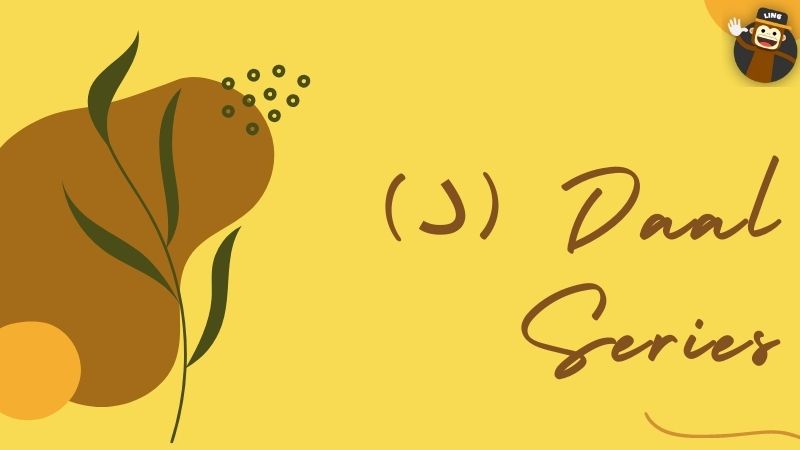
Daal (د) is the eighth letter of the Arabic alphabet. The pronunciation of Daal (د) is the same as the letter “D” in English.
Daal (د) is a consonant letter in Arabic, but it can be written in only two forms, i.e., the isolated form and the final form. It can not be written in the medial and initial form.
- The isolated form Daal is itself, and it is written as (د).
- The final form of Daal is written like this (ـد).
The Arabic alphabets (ذ، ر، ز) Zaal, Raa, and Zaa, respectively, also belong to the same family and have the same characteristics with minor changes in their writing style, etc.
The Seen (س) Series
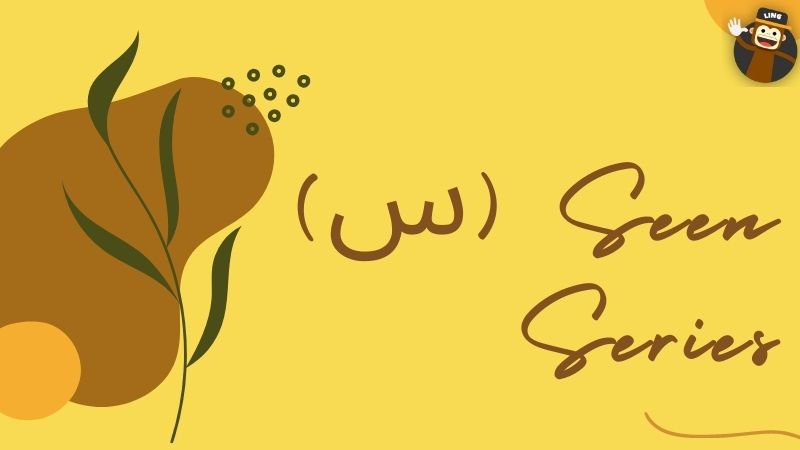
Seen (س) is the twelfth letter in the Arabic alphabet. The letter Seen (س) was derived from the Aramaic language. So it is called an Arabic-Aramaic letter pronunciation. Seen (س) is the same as that of the letter “S” in English.
Seen (س) is a consonant that can be written in all forms.
- Seen (س) is written in the isolated form (س).
- In the initial form, Seen (س) is written as (س).
- In medial form, Seen (س) is like this (ـسـ).
- And in the final form, Seen (س) is written in this way (ـس).
The same rules will be followed for the adjacent Arabic letter “ش.” The Arabic letters (ش، ص، ض) also belong to the same family. They have just a few changes between them, but all the characteristics of the letters are the same.
The Tua (ط) Zua (ظ) Squad
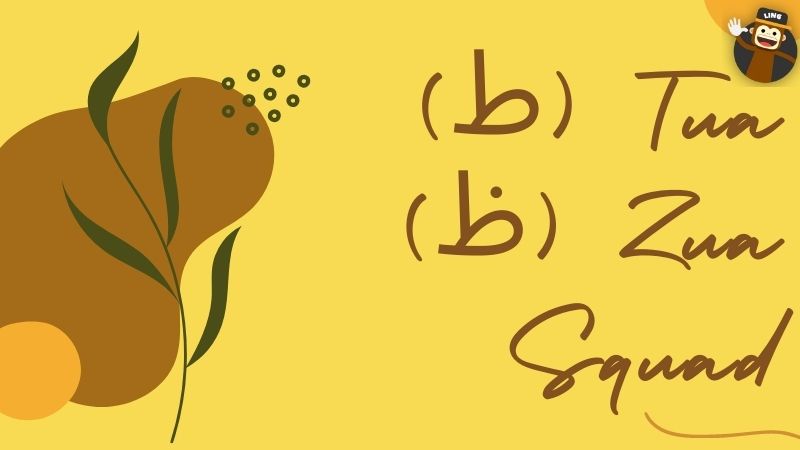
Tua and zua are the 16th and 17th letters in the Arabic alphabet, respectively. The pronunciation of tua (ط) is like a fat “T,” and of zua (ظ) is like a fat “Z.”
The tua (ط) and zua (ظ) can be written in all forms.
- In isolated form, tua (ط) is written like this (ط), and zua (ظ) is written like this (ظ).
- In the initial form, tua (ط) is written like this (طـ), and zua (ظ) is written like this (ظـ).
- In the medial form, tua (ط) is written like this (ـطـ), and zua (ظ) is written like this (ـظـ).
- In the final form, tua (ط) is written like this (ـط), and zua (ظ) is written like this (ـظ)
Ayin (ع) And Ghayen (غ) Family
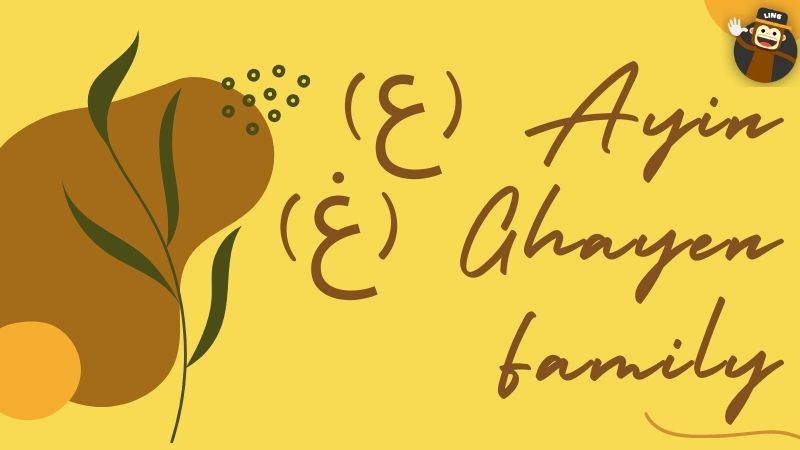
The Ayin (ع) and Ghayen (غ) are the 18th and 19th letters of the Arabic alphabet, respectively. They are pronounced from the bottom of the throat.
Just like the many other consonants of the Arabic language, the Ayin (ع) And Ghayen (غ) can be used in all forms.
- In isolated form, Ayin (ع) is written like this (ع), and Ghayen (غ) is written like this (غ).
- In the initial form, Ayin (ع) is written like this (عـ), and Ghayen (غ) is written like this (غـ).
- In medial form, Ayin (ع) is written like this (ـعـ), and Ghayen (غ) is written like this (ـغـ).
- In the final form, Ayin (ع) is written like this (ـع), and Ghayen (غ) is written like this (ـغ).
Arabic Alphabet Chart
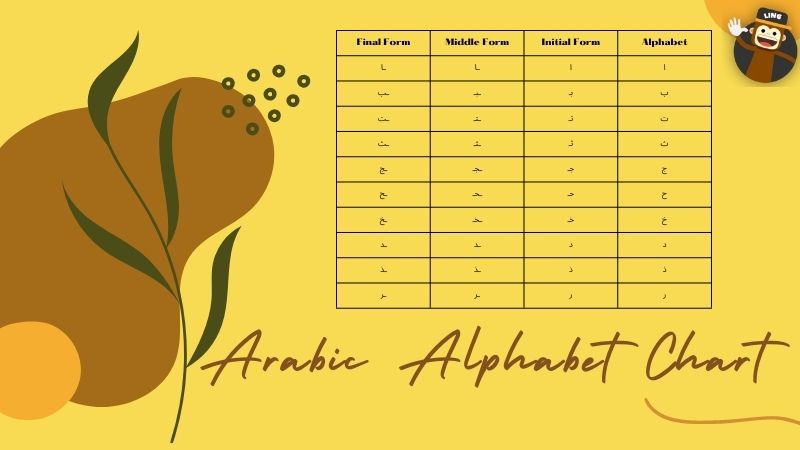
The information that is mentioned above is a detailed Arabic alphabet overview. More than a few have been discussed, and a few consonants are explained below.
The remaining alphabet is similar to the one discussed, like short vowels, because most Arabic letters are similar in terms of their characteristics.
This chart can help you learn all about the Arabic alphabet.
| Final Form | Middle Form | Initial Form | Alphabet |
| ـا | ـا | ا | ا |
| ـب | ـبـ | بـ | ب |
| ـت | ـتـ | تـ | ت |
| ـث | ـثـ | ثـ | ث |
| ـج | ـجـ | جـ | ج |
| ـح | ـحـ | حـ | ح |
| ـخ | ـخـ | خـ | خ |
| ـد | ـد | د | د |
| ـذ | ـذ | ذ | ذ |
| ـر | ـر | ر | ر |
| ـز | ـز | ز | ز |
| ـس | ـسـ | سـ | س |
| ـش | ـشـ | شـ | ش |
| ـص | ـصـ | صـ | ص |
| ـض | ـضـ | ضـ | ض |
| ـط | ـطـ | طـ | ط |
| ـظ | ـظـ | ظـ | ظ |
| ـع | ـعـ | عـ | ع |
| ـغ | ـغـ | غـ | غ |
| ـف | ـفـ | فـ | ف |
| ـق | ـقـ | قـ | ق |
| ـك/ـڪ | ـكـ/ـڪـ | كـ/ڪـ | ك/ڪ |
| ـل | ـلـ | لـ | ل |
| ـم | ـمـ | مـ | م |
| ـن | ـنـ | نـ | ن |
| ـه | ـهـ | هـ | ه |
| ـو | ـو | و | و |
| ـي/ـے | ـيـ | يـ | ي/ے |
Arabic Numerals
Just like all other languages. Arabic also has only ten numeric digits, but they are written differently and spelled differently due to differences in the language.
For example:
In Arabic, one is said and spelled as “Wahid (واحد),” and one is written in Arabic script.
Wrapping Up

There are many reasons that you might come across an Arabic person. Firstly, the Arab community and the Gulf states are naturally rich in minerals, so, many people tend to go there for job opportunities.
Secondly, people have a religious connection with these places since it is obligatory for a Muslim to perform Hajj, so they have to visit an Arab state at least once in their lifetime.
Thirdly the Arabs have one of the world’s best markets or places worth seeing. Let’s take an example of the U.A.E., which is very futuristic, and even westerners want to visit it because of its charm.
So to communicate with the locals, one must know Arabic. Arabs are way more welcoming when they know someone knows their culture well.
If learning Arabic is a “must do” thing for you, then Ling App is the best place to learn Arabic. Also, check out the Arabic food blogpost. Gradually you’ll know all you need to know about this language and will start speaking in no time. All it requires is consistency.
You can best install our app from Google Playstore or App Store and start learning the Arabic language!!!
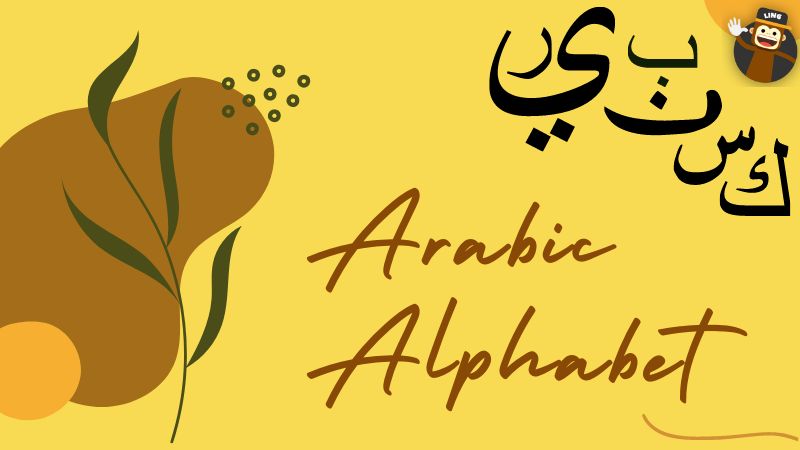





























































2 Responses
Very interesting 👌
Shukran jazeelan!
Its a great and excellent job, I appreciated very much the way you explain the lesson. I am interested to read and learn from your blog. Congratulation.